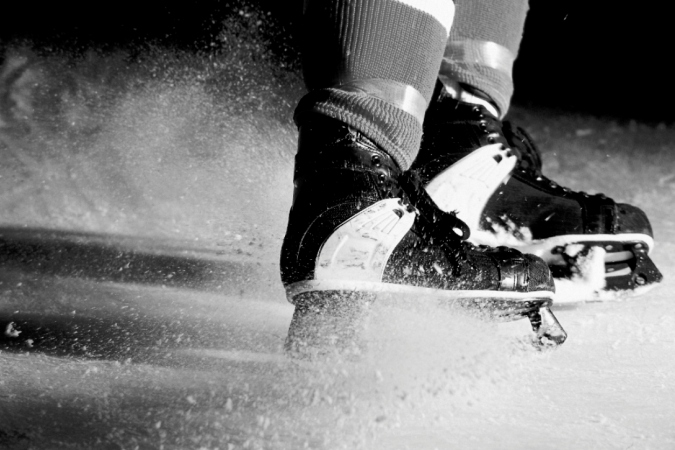How to stop while ice skating?

File photo credit: www.essexstudent.com
MASTER YOUR ICE SKATING TECHNIQUE (1): STOPPING
Now that you know what figure skating is and how to do a spiral, you should learn how to stop.
Stopping in ice skating is an important skill that requires plenty of practice. An important thing to remember is that stops are on the weaker side. Skaters should also be aware of arms and body positions and carriage when they practice stopping. By scraping the flat part of the blade across the ice, friction is created on the ice. This causes a stop.
Snowplough Stop
The most basic stops is the snowplough stop. This stop can be done either with one foot and both feet. To do a snowplough stop, start by pushing the flat part of the blade and scrape the ice. Then, push one foot out, put pressure on the flat part and bend the knees. This will create some snow on the ice and bring you to a complete stop.
T-Stop
Another basic stop, the T-stop is not usually favoured as it is not elegant. Although this looks easy, it is fairly difficult to master. In a T-Stop, the skater places the middle of one blade behind the other blade, forming a “T” shape. The foot that is behind, scrapes the ice with a back outside edge while the forward skate glides forward; thus the foot behind does the actual stopping. It is considered complete when the skater makes a complete stop in the "T" position. New figure skaters usually find it difficult to do a good T-Stop, since they drag the trailing foot behind on an inside edge.
Hockey Stops Are Also For Figure Skaters
This type of stop resembles the stop used by hockey players, but the skater pays attention to posture, arm positions, and carriage. Often, figure skaters do this stop on one foot, and this can involve much control and balance. If done correctly, the two foot hockey stop ends with the front blade is pressed to an inside edge, and the back foot fits right behind the front foot on an outside edge. Both knees are bent, with the pressure on front part of the blades.
Front T-Stops
Often, figure skating competitors finish their entry onto the ice with a front T-Stop. This stop looks like the T-Stop, except (as the name suggests) the stopping foot is in front of the moving skate. The front T-stop is not easy to do.
To receive the latest updates on the happenings in the Singapore sports scene, or to find out more about some of the latest programmes on offer at ActiveSG, like our Facebook page here.



